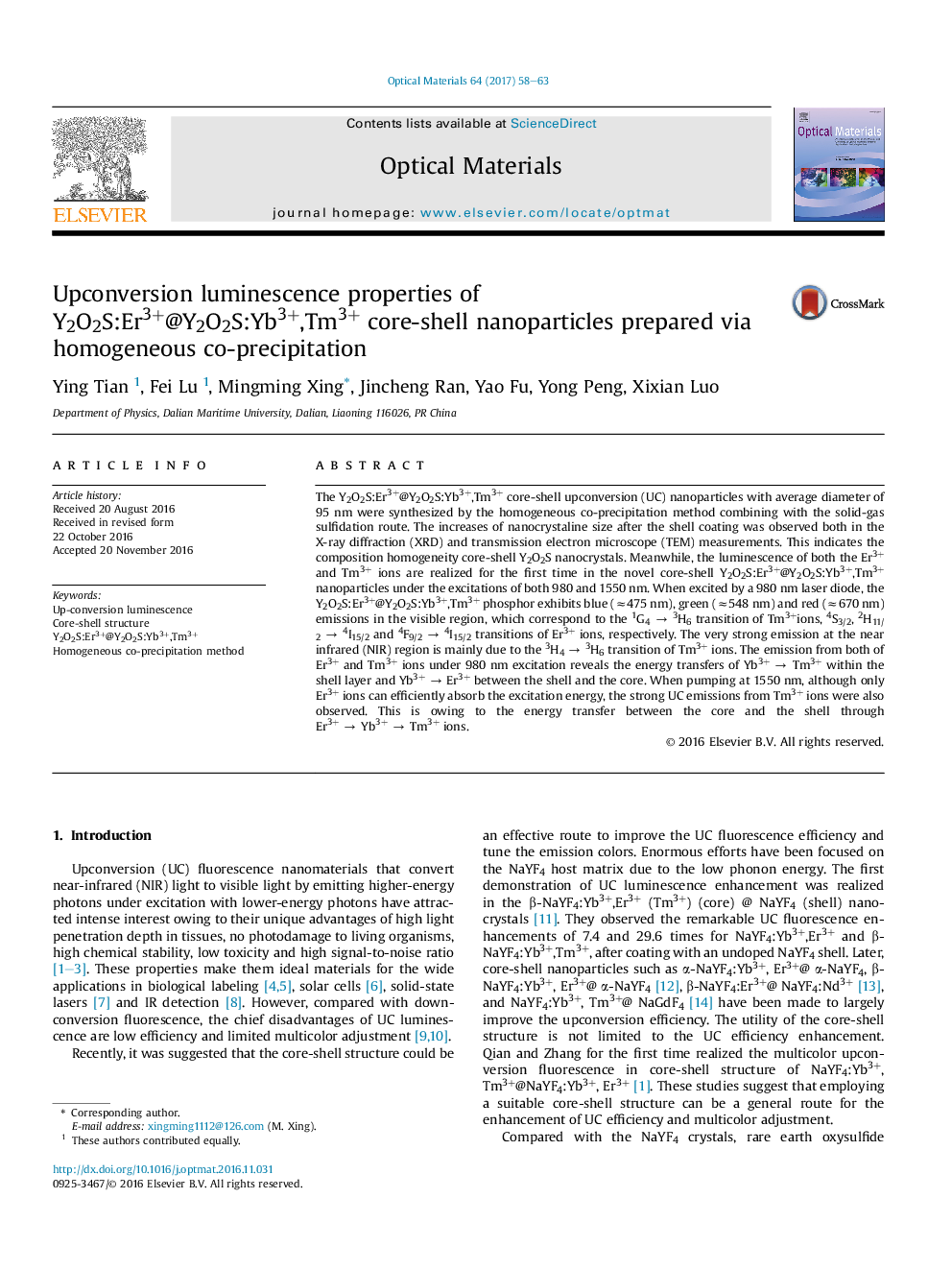| Article ID | Journal | Published Year | Pages | File Type |
|---|---|---|---|---|
| 5442675 | Optical Materials | 2017 | 6 Pages |
Abstract
The Y2O2S:Er3+@Y2O2S:Yb3+,Tm3+ core-shell upconversion (UC) nanoparticles with average diameter of 95 nm were synthesized by the homogeneous co-precipitation method combining with the solid-gas sulfidation route. The increases of nanocrystaline size after the shell coating was observed both in the X-ray diffraction (XRD) and transmission electron microscope (TEM) measurements. This indicates the composition homogeneity core-shell Y2O2S nanocrystals. Meanwhile, the luminescence of both the Er3+ and Tm3+ ions are realized for the first time in the novel core-shell Y2O2S:Er3+@Y2O2S:Yb3+,Tm3+ nanoparticles under the excitations of both 980 and 1550 nm. When excited by a 980 nm laser diode, the Y2O2S:Er3+@Y2O2S:Yb3+,Tm3+ phosphor exhibits blue (â475 nm), green (â548 nm) and red (â670 nm) emissions in the visible region, which correspond to the 1G4 â 3H6 transition of Tm3+ions, 4S3/2, 2H11/2 â 4I15/2 and 4F9/2 â 4I15/2 transitions of Er3+ ions, respectively. The very strong emission at the near infrared (NIR) region is mainly due to the 3H4 â 3H6 transition of Tm3+ ions. The emission from both of Er3+ and Tm3+ ions under 980 nm excitation reveals the energy transfers of Yb3+ â Tm3+ within the shell layer and Yb3+ â Er3+ between the shell and the core. When pumping at 1550 nm, although only Er3+ ions can efficiently absorb the excitation energy, the strong UC emissions from Tm3+ ions were also observed. This is owing to the energy transfer between the core and the shell through Er3+ â Yb3+ â Tm3+ ions.
Related Topics
Physical Sciences and Engineering
Materials Science
Ceramics and Composites
Authors
Ying Tian, Fei Lu, Mingming Xing, Jincheng Ran, Yao Fu, Yong Peng, Xixian Luo,
